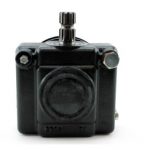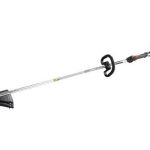In most cases, when you purchase and move into a new home, the thick luscious lawn is already established. Therefore, you properly don’t know the species of grass being used.
In order to keep your lawn in tip-top shape, you need to know what types of grass you are dealing with. How much water and fertilizer you use, mowing height and frequency, and what weeds and pests you have to deal with depends on the type of grass that is growing on your lawn. If you don’t know or misidentify the species of grass, then you could perform the wrong treatment.

(Source: The Lawn Institute)
First, you will need to understand the climate of where you live. Although it is true that the grass of your lawn may not be native to your region, the grasses used are most probably made up of types that thrive in your local climate.
Species Of Grass
There are really two main types of grass –- cool-season grass and warm-season grass. What types of grass used on your lawn depends on the climate.
So, if you live in a region of the country that experiences cool seasons with temperatures between 65°F and 75°F, then most likely cool-season grasses make up your lawn. If you live in a warm season climate where temperatures are between 80°F and 95°F, then your lawn most likely is made up of warm-season grasses.
To breakdown the climate zone more specifically, the cool humid zone of the country includes the northeast, north, Midwest, and Pacific Northwest. Cool-season grasses that thrive in this condition are Bluegrass, Fescues, Ryegrass, and Bentgrass.
The cool arid zone contains the western areas of the Midwest states and most of the western states. The grasses that thrive in this area include Buffalograss, Canada bluegrass, and Wheatgrass.
The warm humid zone includes the southeastern states. The types of grass that flourish here include Bahiagrass, Bermudagrass, St. Augustinegrass, and Zoysiagrass.
The warm arid region of the country includes the southwestern states. Grasses that succeed here include Bermudagrass and Buffalograss.
You probably are not aware that there is also a transition climate zone. This includes eastern central and mid-central parts of the country. It is said that it is most difficult to grow grass and no single species of grass is well adapted for the region. Still, any of the grass species referenced above may be growing there.
This narrows down the options of what types of grass could be growing on your lawn. However, there is more you need to know to single out the exact species of grass.
Observe The Grass For Specific Characteristics
You will also need to observe the youngest grass leaves and how the grass grows to come to a proper conclusion.
The youngest leaves of the grass come from the center of the shoot and has not yet expanded. These leaves will either be rolled or folded in the bud. Kentucky bluegrass is rolled, while ryegrass is folded.
When observing how the grass grows, determine whether it grows close together or spreads. Grasses that grow close together include fescues. Grasses that spread include centipedegrass. There are also grasses that spread, but also have underground stems. These stems assist in spreading out the grass as well as fill in blank spots. Grasses that fall into this group include Bahiagrass. There are also grasses that have both of these characteristics. One such grass species that has this is Zoysiagrass.
In addition, you will need to consider the purpose the grass serves. For example, Kentucky bluegrass is particularly useful for commercial and residential lawns. Keep in mind as your study the grass of your lawn that some grasses are used due to their durability and tolerance for temperatures while others are used because they mix well with different types of grass.
Answer these questions to help you identify the types of grass of your lawn.
- Does the grass resist traffic?
- Does it look good from afar?
- Does it bounce back quickly when damaged?
Finally, study the entire grass plant with an eye on specific parts.
For example,
- Does the crown come up from the roots or at the bottom of the grass?
- Does the sheath come up from the crown and connect to the blade or is it split or fused?
- Is the blade of the grass smooth, ridged, or hairy?
- Is the ligule (where the sheath and blade join) membranous, hairy, or absent?
- Is the collar (the backside of the grass where the sheath and blade meet) continuous, constricted, or divided?
- Are the auricles (located near the ligule, by the collar) long and clasping, short and stubby, or are they absent?
- Is the leaf tip on the top of the blade end in a flat point, rounded, or a keeled (boat-shaped)?
- Is the seedhead (the flowering part of a young shoot) spiked, a loose branching cluster like oats, or raceme?
Obviously, the process of identifying what species of grass is on your lawn is complicated. One source that can help is an online turf tool on the website of the Purdue University’s Department of Agronomy. Better yet, maybe you should consult with a lawn care professional.
(Source: lawndoctor.com)






